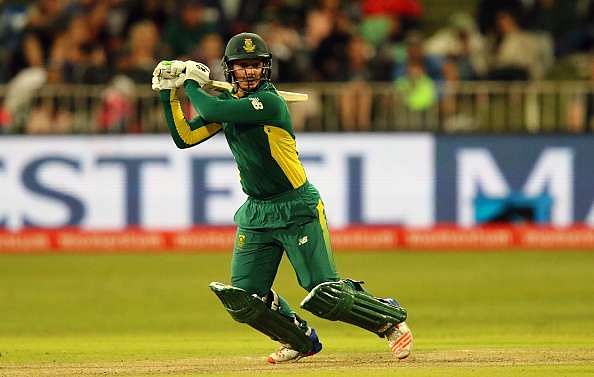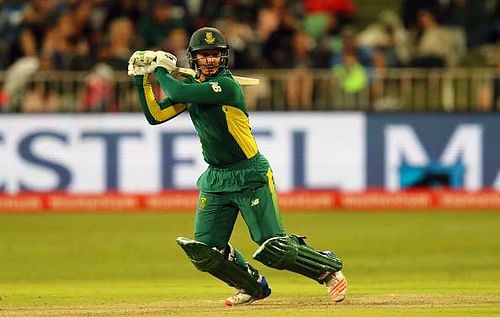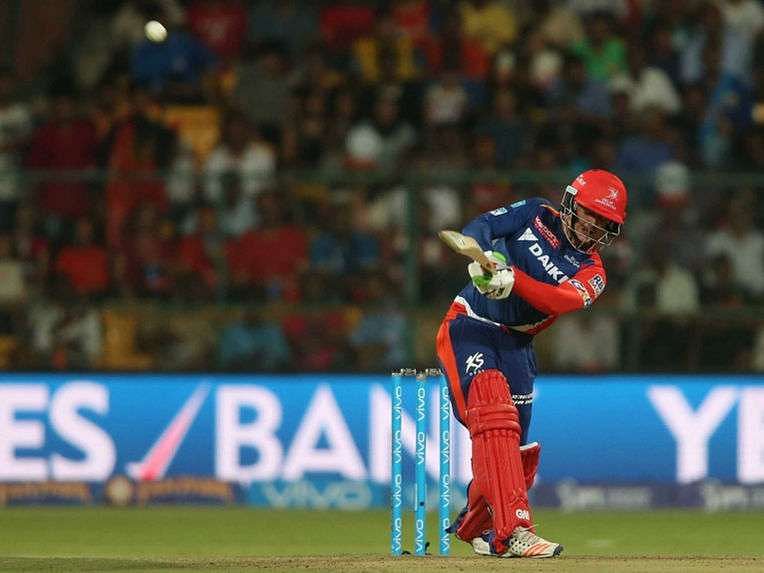
Why Quinton de Kock is the next big thing in South African cricket

“Curious indeed how these things happen. The wand chooses the wizard, remember… I think we must expect great things from you, Mr. Potter.”
Ollivander’s concern wasn’t misplaced. With the exception of a scar, there was nothing in the façade of the confused 11-year-old that inspired confidence. Yet there he stood, trying out wands, having already survived the Dark Lord’s vengeance without one.
Fast forward to the Indian summer of 2015.
“I won't say I chose cricket. Cricket chose me,” claimed South Africa’s boy-wonder during an interview towards the latter half of IPL 8. He wasn’t perfect or technically gifted, but there was something about him that made him special, glimpses of which was already beginning to show.
It’s been one and a half years since and Quinton de Kock has looked like a man without a plan, yet magically impactful. His mind-boggling conversion rate – 11 centuries and 8 fifties in ODIs – is a testament to it. Not to mention, he is the youngest to have scored 10 ODI hundreds in the history of the game.
‘I don’t like to take help’
When on song, de Kock is delightful to watch. The most remarkable feature of his cricket lies in the fluidity of his batting. Despite being a stroke-player who has a go at every delivery of an over, de Kock hardly appears vulnerable.
Usually, you’d expect someone of his talent to pick his predecessors’ brains when it comes to the dual responsibility of batting and keeping the stumps. His adamant refusal to do that or even to introspect in any form suggests an arrogance characteristic of young achievers.
“These conditions don't really bother me. It doesn't take a whole year to get used to it. It just takes one or two practice sessions. No one has helped me. I don't like to take help. I like to figure out things by myself. That's the way I like to do things.”

When asked about his loss of form last year, de Kock waved it off as ‘the same as anybody’s career’. Self-admittedly, he ‘did not care’, even after being dropped from the national squad in 2015. It is this same air of indifference that he brings to the game whenever he walks out with the willow in hand. Shockingly, though, it has worked for him.
That said, de Kock’s absolute disregard for second-thoughts and lack of insecurity is unsettling, considering how these two qualities had seemed to stall his career just a few months earlier.
The fall of the wonder kid
An ankle ligament tear in December 2014 seemed to imply that de Kock would have to be ruled out for a major fraction of the 2015 World Cup. However, the left-hander made a surprisingly speedy recovery – a little too hasty, perhaps – and allayed fears of South Africa’s strategy falling apart.
As it turned out, he lost his touch following the injury. His feet refused to move and de Kock surrendered to the law of averages after years of stellar performances in first-class cricket. He managed to gather a collective of only 27 runs in the first five matches in the World Cup. An impressive quarter-final innings apart, his slump continued in international cricket ultimately culminating in his exclusion from the squad.
In spite of his enviable record against Indian bowlers, de Kock was not picked for the Tests against India. On his recall to the side against England, the southpaw failed to impress at Cape Town before missing out at the Wanderers owing to a knee issue. The second chance at Centurion could have been his last, had he not carved out a neat maiden Test hundred while displaying the maturity of a veteran.
The comeback
There hasn’t been any looking back since. During the period between February and October 2016, de Kock played 15 ODIs and amassed 827 runs including 3 centuries. He averages 84.75 at home, 81.50 against England and recently notched up his career highest score of 178 against Australia.
These knocks weren’t simply commonplace centuries against weaker oppositions – they had a bigger tale to tell. His unbeaten 138 against England formed the backbone of a 400-run chase the Proteas believed they could complete.
His 113-ball 178 made a mockery of Australia’s Starc-less bowling attack at Centurion. Together, they announced the return of Quinton version 2.0.

The fearlessness that emanates from de Kock’s play is reminiscent of the likes of Virender Sehwag. One of the few rhetorics that stuck with Sehwag for a long time – one that was produced as a counter-argument on several occasions when many wanted to drop him from the Indian squad – is that ‘it’s just the way he plays’. A young de Kock, however, hasn’t yet been afforded the luxury of an expression that can relieve him of responsibilities.
Thankfully, the Cape Town lad is no alien to stepping up when the stakes are high. In December 2013, he joined an elite list of batsmen by scoring three consecutive ODI hundreds against India. A well-crafted 128 against Sri Lanka in July the following year meant de Kock had now converted all five of his fifty-plus scores to hundreds.
A year later, having lost his place in the Test squad, de Kock piled on runs for South Africa A. He scored two centuries in two List A matches and another in an unofficial Test in the same series. The domestic T20 competition saw him emerge as the highest run-scorer in the tournament.
Ignoring ‘Quinton version 2.0’ seemed no longer possible.
As de Kock continues his efforts at cementing a long-term position in the Test team, South Africa’s future – a term that had once come to be invariably associated with the 23-year-old’s name – seems to be secure. He has a solitary hundred in the longest format so far, but plenty more are sure to come as long as he plies his trade in whites.
The wand had chosen Harry. And the Chosen One undeniably ended up doing the greatest of things. Did cricket indeed choose de Kock?
Regardless, South Africa can most certainly expect great things from him in the years to come.